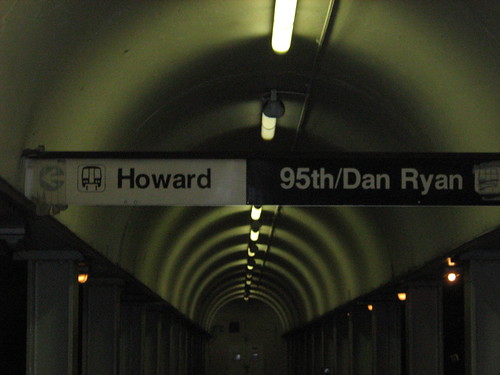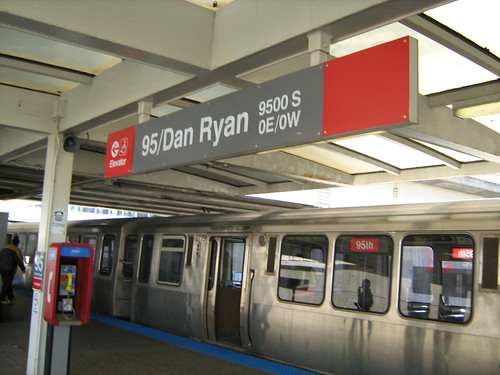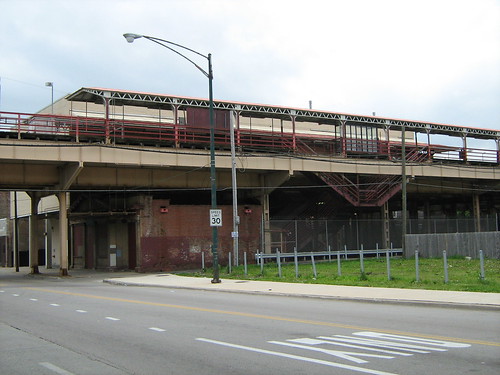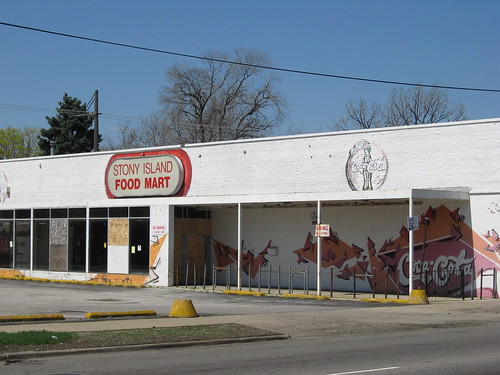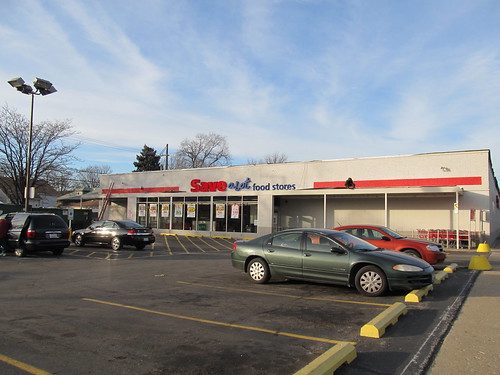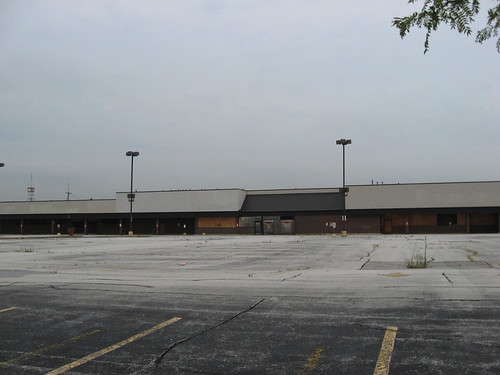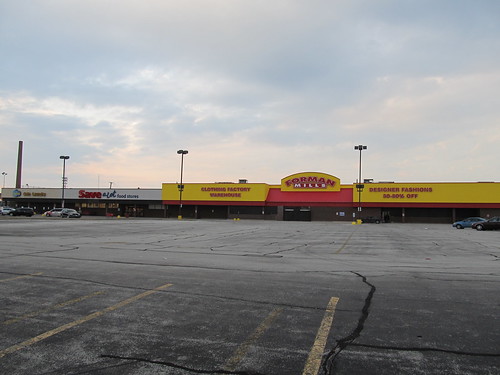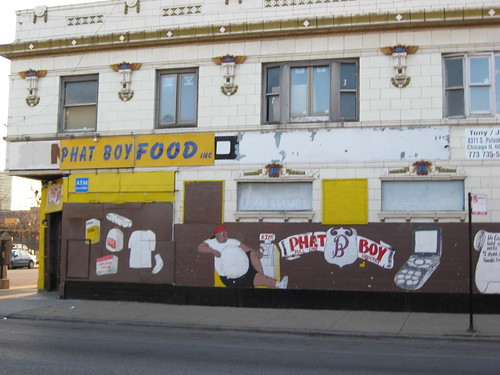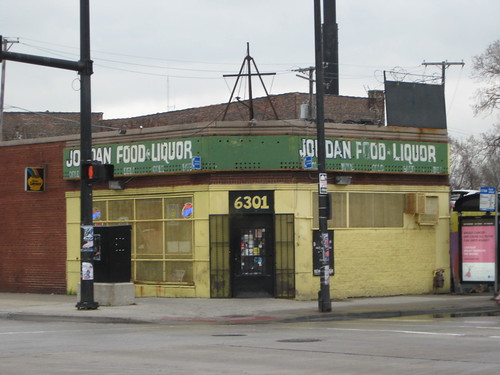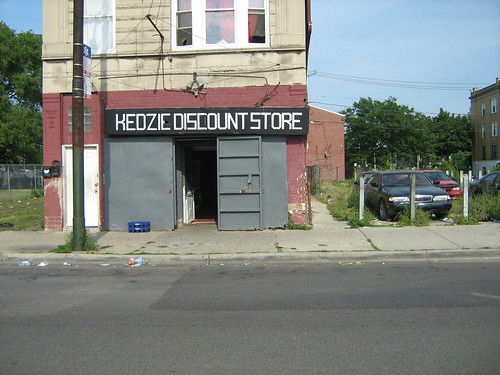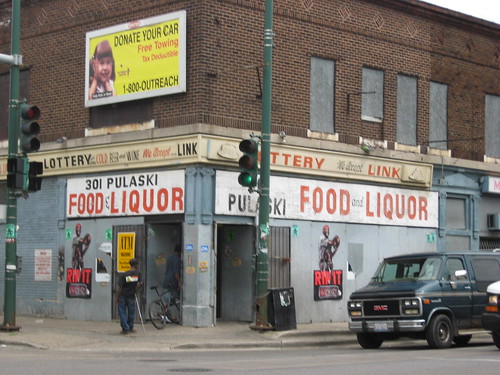Chicago is a world class city in many ways. It has many amenities like an extensive public transportation system. The Chicago Transit Authority (CTA) oversees the buses and trains which travel the city. However, the system has many inequalities and disparities that affect how different people can access the system. Over time many services have been cut, disproportionately affecting those in low income areas.
According to the CTA System Map, there is a greater amount of public transportation in the Central area and on the North side of the city than there are on the South or West sides. Even though there is a greater need for public transportation in these areas, the south and west sides of the city are still greatly under served.
CTA System Map
Inequality in CTA construction projects and upgrades is common in terms of funding and how such projects are carried out. For example, the Green Line, which serves primarily working class to low income African American neighborhoods on the south and west sides, was completely closed for about two years during the 1990's, leaving residents with few other choices for public transportation. This impacted residents' abilities to hold jobs, seek medical care, have a safe means of travel, and to make use of resources outside of their cut off areas.
Green Line History The CTA Reinvents Itself: The "L" Heads Into the 21st Century (1990-present)
In contrast, the Brown Line, which serves primarily middle to upper class white neighborhoods on the North side, had only a few nonconsecutive stations closed at one time, each for about one year, during the five year project span which was recently completed.
Thus, residents in these neighborhood experienced less disruption or hardship as a result of the construction project. These examples illustrate that inequalities in public transportation exist and how they disproportionately impact the ability of people from different backgrounds to make use of city resources.
CTA Brown Line Project Website 6/10/08 via Internet Archive
In terms of geographic coverage, the CTA system is very unequal. There are many examples of inequality in terms of where bus and or train routes run. The CTA Red Line reaches the city northern limits at Howard Street and continues north via the Purple Line to Linden Avenue in Wilmette. However, the Red Line does not reach the southern city limits at 138th Street. Service south of 95th Street is provided via various bus routes.
CTA System Map
There is proposal to extend the the Red Line further south toward to 130th Street from it's current terminal at 95th Street and the Dan Ryan Expressway, in order to provide better services to this traditionally under served area. This proposal is intended to better serve those in working class and lower class neighborhoods.
Red Line Extension.
In contrast to enhancement of services, reductions in public transit service have been more common than improvements in recent years and have taken the form of reductions in frequency of service, elimination of certain bus lines and transit stops, and elimination of overnight Night Owl service on some routes.
1997 CTA Service Cuts Internet Archive
These service cuts often happen in outlying areas of the city populated by lower income residents where deficiencies in public transit services already exist. These reductions have left people waiting longer for a bus or train or forced them to walk greater distances to access transit, often in high crime areas. Examples of these reductions are provided below.
The CTA Green Line has experienced the greatest reduction in the number of stations of any line in CTA history. Several South Side stations have been eliminated over time, leaving huge gaps in transit access for residents in these areas. For example, on the East 63rd (Jackson Park) branch of the Green Line, the track previously extended one mile further east than it does today, resulting in the elimination of three transit stations East 63rd Branch.
Similarly, three stations along the Englewood (Ashland) Branch were also eliminated over a 20 year period, leaving a huge gap approximately two miles long.
Englewood Branch
Residents of the Garfield Park area on the West Side were particularly upset when the Homan Avenue Green Line station in their neighborhood, which was served by a bus was relocated to Central Park Avenue, resulting in great inconvenience, because the purpose of the relocation was to provide better service for tourists to the nearby Garfield Park Conservatory. This example shows that tensions between funding the transit needs of tourists and businesspeople versus those of everyday residents also exist within specific neighborhoods that have tourist attractions. Once again, inequality exists and favors the few over the many. W. Siders protest plan to rebuild CTA station- Chicago Sun Times 6/3/1998
Reductions on the Blue Line's Congress Branch provide further examples of inequality within the CTA transit system. Three stations that were closed on the West side in 1973 due to budget cuts and have not been reopened. These closures created gaps of up to one and one half miles between stations. It was particularly unfortunate that the stop closed at Central Avenue is only one block away from Loretto Hospital, one of the few hospitals on the West side. This closure further reduced direct access to medical care and a source of employment on the already impoverished West side. In addition to inequalities in transit across the city, there also exist inequalities in residential development in different neighborhoods of the city, in part because of gentrification. Congress Branch
Zol87's Blog
This blog will focus on my adventures and experiences in photography and exploring neighborhoods in relation to socioeconomic issues in Chicagoland. You can see my entire photo gallery here on Flickr at Zol87's Photo Gallery
Friday, December 14, 2012
Saturday, March 24, 2012
An Improvement to the Food Desert Situation
Before
The Food Desert situation in Chicago is improving. Many new grocery stores are opening around the city to serve communities that were once only served by corner stores. Walgreens, CVS, Aldi and Save A Lot Foods have all opened new locations across the city. Many existing stores are now offering greater food selections. Some of these new stores have even taken over sites that were once vacant. 2011 Chicago Food Desert Update
Before
After
While this is a step towards improvement. Some of these stores are still more expensive than full scale grocery stores in other neighborhoods even though they are nowhere what the independent corner stores would charge for food. Shopping for a Food Oasis
8240 S Stony Island Ave
Chicago, IL 60617
8240 S Stony Island Ave
Chicago IL 60617
The Food Desert situation in Chicago is improving. Many new grocery stores are opening around the city to serve communities that were once only served by corner stores. Walgreens, CVS, Aldi and Save A Lot Foods have all opened new locations across the city. Many existing stores are now offering greater food selections. Some of these new stores have even taken over sites that were once vacant. 2011 Chicago Food Desert Update
Before
After
While this is a step towards improvement. Some of these stores are still more expensive than full scale grocery stores in other neighborhoods even though they are nowhere what the independent corner stores would charge for food. Shopping for a Food Oasis
Thursday, June 30, 2011
The Problems With Food Deserts
Chicago is one of many cities that contains food deserts which fuel the greater problem of inequality on many different levels. Food deserts are primarily found low income minority areas on the South and West Sides. These areas lack grocery stores that sell fresh fruit and vegetables. Instead these areas are served by corner stores that primarily serve junk food and liquor in addition to an overabundance of fast food restaurants.
The food and drinks sold in these stores and restaurants is often a major part of local residents' diets which leads to health problems like heart disease, stroke and diabetes. These health problems occur in rates significantly higher than those in areas with access to healthy food. Many major grocery stores refuse to locate in these areas due to concerns about crime and making a profit.
Many of these stores are also not ascetically pleasing due to their location in areas that are often heavily blighted and have a high crime presence. They often feature fences and bars over the doors and windows to prevent break ins, protective barriers over the counter to protect the clerk in holdups as well as mirrors and security cameras everywhere.
If people in these areas want to get fresh food they have to spend time and money sometimes traveling great distances in order to shop at a grocery store and often end up paying higher prices than what they can afford. If corner stores in their area carry fresh food, residents will often end up paying outrageous prices for small quantities of food. These prices are often higher than what it would cost to buy the same product at a supermarket.
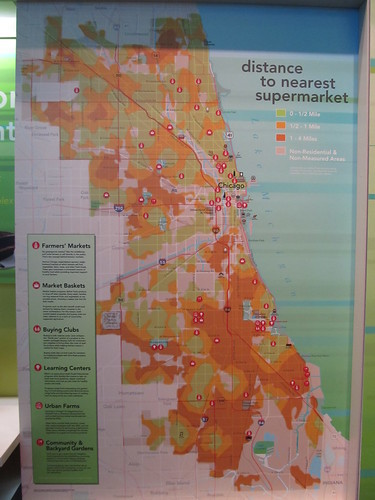
Map of Chicago Food Deserts at the Museum of Science and Industry's "YOU: The Experience" exhibit on the Human Body and Health, a photo by Zol87 on Flickr.
*Map of Chicago Food Deserts in 2010 from Mari Gallagher Research and Consulting Group
*Map of Major Grocery Stores in Chicago from CityNews Chicago
Tuesday, June 28, 2011
Welcome to My Blog!
This blog will focus on my adventures and experiences in photography and exploring neighborhoods in relation to socioeconomic issues in Chicagoland. please stay tuned in for updates!
You can see my entire photo gallery here on Flickr at Zol87's Photo Gallery
You can see my entire photo gallery here on Flickr at Zol87's Photo Gallery
Subscribe to:
Posts (Atom)
